Watching bees and butterflies busy at work pollinating garden plants in the spring and summer months is a delight. These pretty insects play an important role in pollinating flowers and form an essential part of the eco-system.
Bees are one of our more commonly-known pollinators, but there are a range of species which can act as pollinators including butterflies, moths, wasps, beetles, and flies.
Bees play a crucial role in the life-cycle of plants by pollinating in the spring and summer months. This process is essential because it allows plants to reproduce, and many plants depend on bees or other pollinators to survive.
Butterflies are another key pollinator that we should be welcoming to our gardens. There are approximately 60 species British butterflies that grace our shores annually, including regular migrants. However, many of our most loved British butterfly species are at risk of extinction, so planting blooms in our gardens can help them survive.
Why are pollinators important?
Insects make the world go round. They pollinate crops and wildflowers, recycle dead leaves, dung and animal corpses, control pests, help keep the soil healthy, and are food for many birds, lizards, amphibians, bats and other small mammals.
All of this happens in gardens, meaning that the plants we grow play a huge roll in the success of insect species.
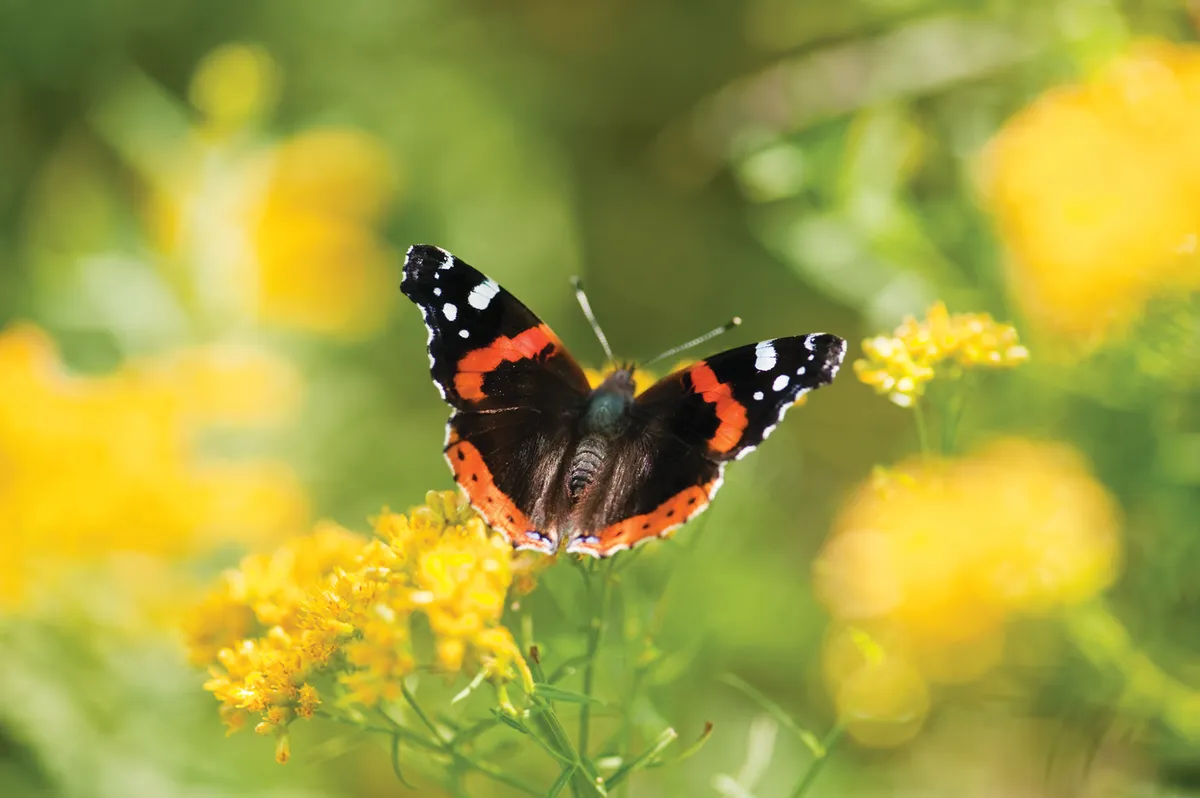
Insects are also wonderful and beautiful, with fascinating and sometimes peculiar lifecycles that play out right under our noses, usually unnoticed: earwigs tenderly care for their young; bumblebee queens battle to rear their offspring against the threat of cuckoo bees and parasitic wasps; ants indulge in tribal warfare.
It is worrying that insects are in decline, but unlike many other big global environmental issues about which we might feel helpless, we can get directly involved in helping them, and see the benefits. We can provide food and a home for innumerable insects in our gardens.
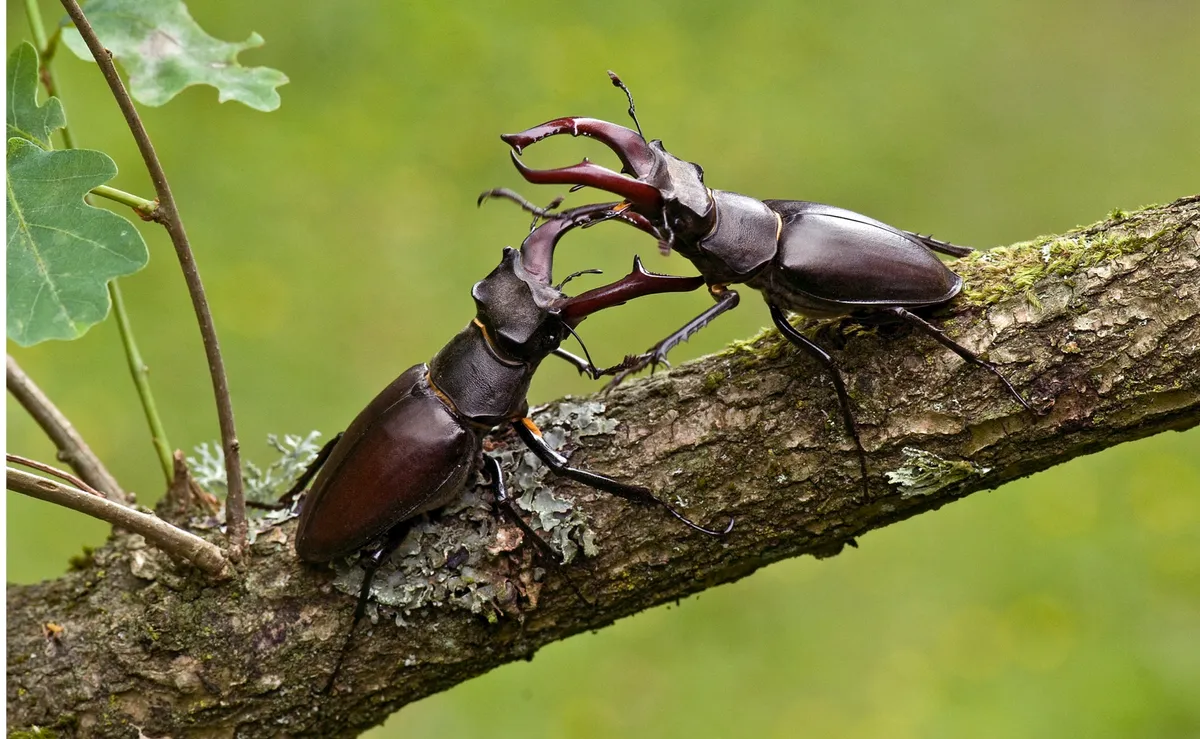
How to pick insect-friendly plants for your garden
The first step in turning your garden into a haven for insects is to choose the right plants. Flowers evolved to attract insects some 300 million years ago, so you might think that all flowers would be good for insects, but sadly this is not so.
Plant breeders have tinkered with flowers over many years, selecting double varieties, larger blooms, unusual colours and so on, and in doing so have often created flowers that have lost their original purpose – they no longer attract insects. Most annual bedding plants, such as busy lizzies, begonias, pansies, petunias and pelargoniums are hopeless for insects, as are most ‘double’ varieties, which have extra petals instead of the pollen-producing anthers. Beware also that many plants on sale in garden centres will contain pesticide residues.
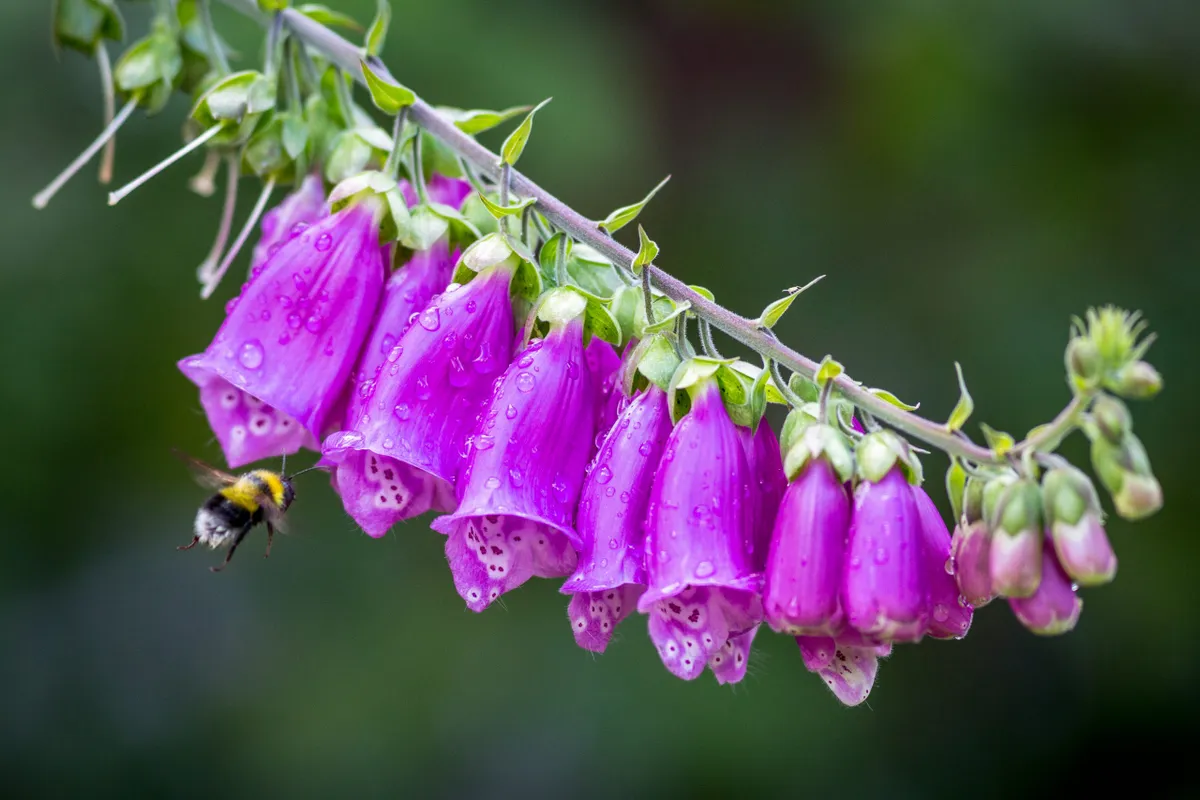
In this guide, we explore some of the best plants for bees, butterflies and other key pollinators. We include wildflowers, which are usually great for native insects, and also many traditional cottage garden plants. Most are very easy to grow, and most are perennials so they don’t need replacing every year.
Different plants tend to attract different insects, depending on the shape of the flower. Foxgloves, for example, attract only species of bumblebee that have long tongues, since without these the bees cannot reach the nectar. Shallow flowers, such as helenium and single roses, attract short-tongued bees and hoverflies, and marjoram is very attractive to butterflies. It is great to have a mix to cater for as many insects as possible. Try also to have flowers through the year, from when the first hungry bumblebee queens emerge in early March through to October when the last few insects are feeding up for hibernation.
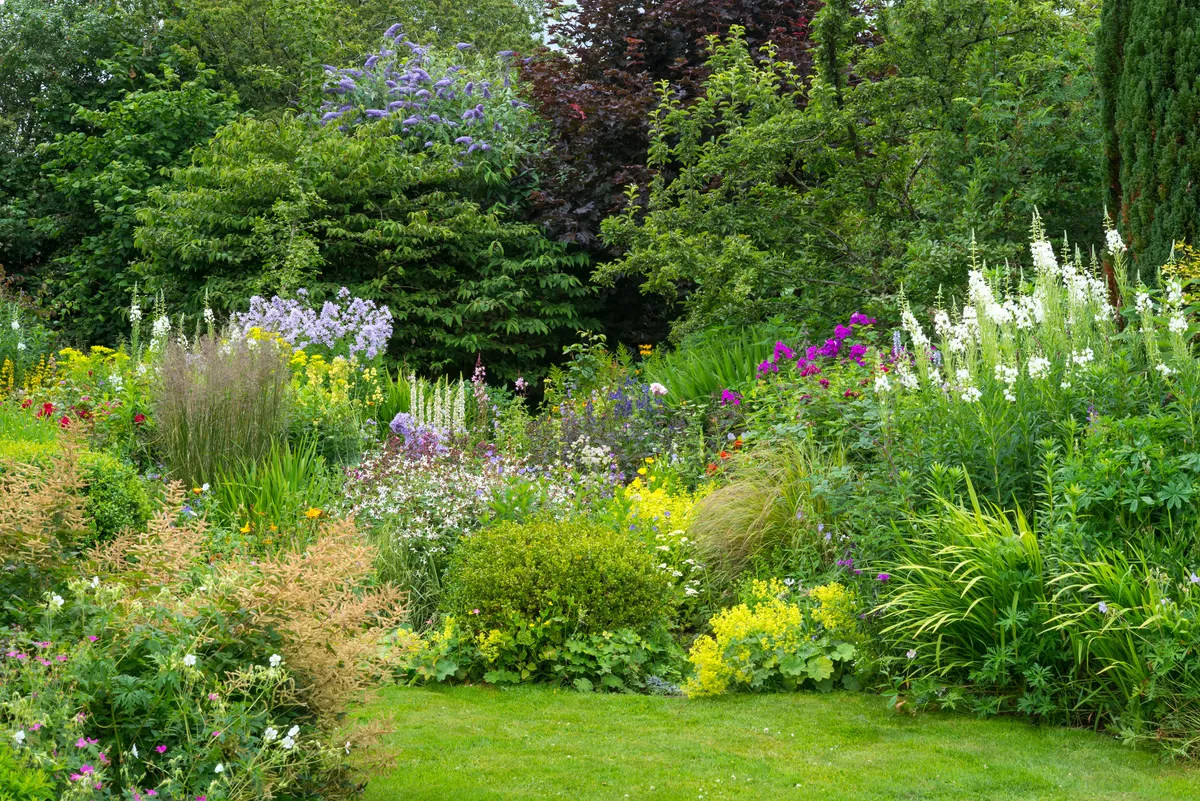
Gardens cover nearly half a million hectares of the UK, an area greater than all of our nature reserves. Imagine if most of them were pesticide-free, with a mini-wildflower meadow, pollinator-friendly flowers, a bee hotel, a small pond and compost heap.
Our gardens could become a vast network of tiny nature reserves, supporting biodiversity, storing carbon in the soil and trees, and providing home-grown food. We could invite nature to come and live with us in our gardens, so that our children grow up with the sight and sound of buzzing bees, the flashing colours of butterfly’s wings, birdsong, and the croak of toads in the garden pond.
Best summer plants for bees and butterflies
Words: Dave Goulson
Comfrey, Symphytum officinale
Comfrey is a very hardy perennial, great for the back of a herbaceous border or a forgotten corner where it will look after itself. It has a very long flowering period with a peak in late May and June, followed by smaller numbers of flowers through to October.
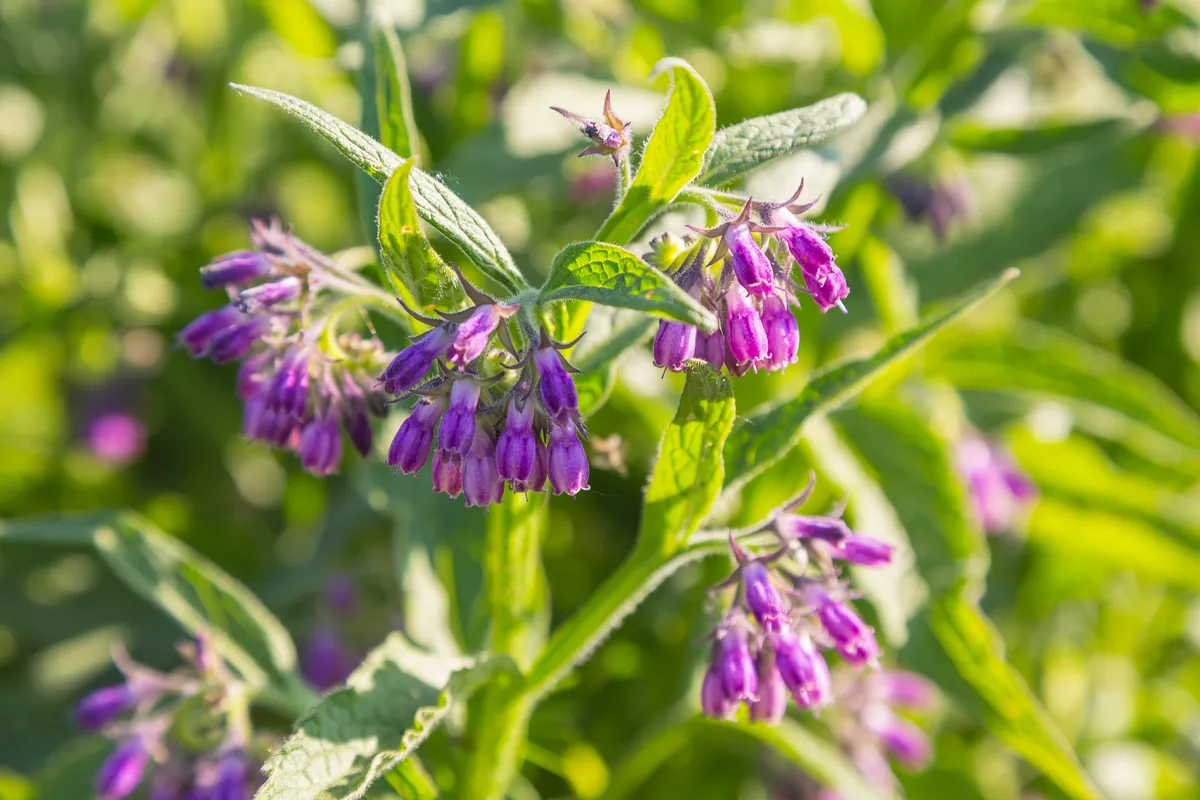
Geranium, ‘Rozanne’
Most hardy geraniums are very attractive to bees, and are easy-to-grow perennials suitable for the front or middle of a border, flowering mainly in May and June. If cut back after flowering, most types will flower again, providing blooms all summer. Also known as cranebill or 'jolly bee'.
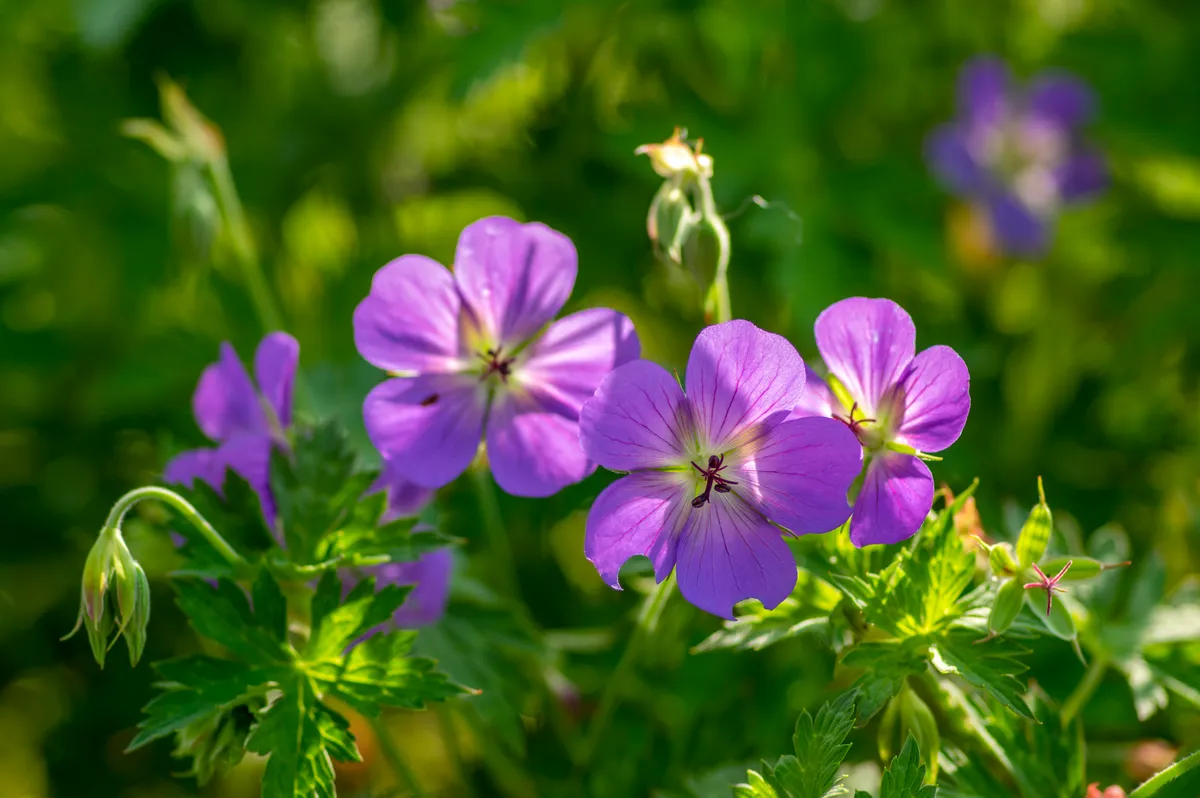
Foxglove, Digitalis purpurea
This very familiar and beautiful cottage-garden and woodland flower is a favourite with long-tongued bumblebees. Foxgloves are usually biennial, flowering in their second year. They will grow in most conditions, being quite happy in moderate shade or sun and in almost any soil.
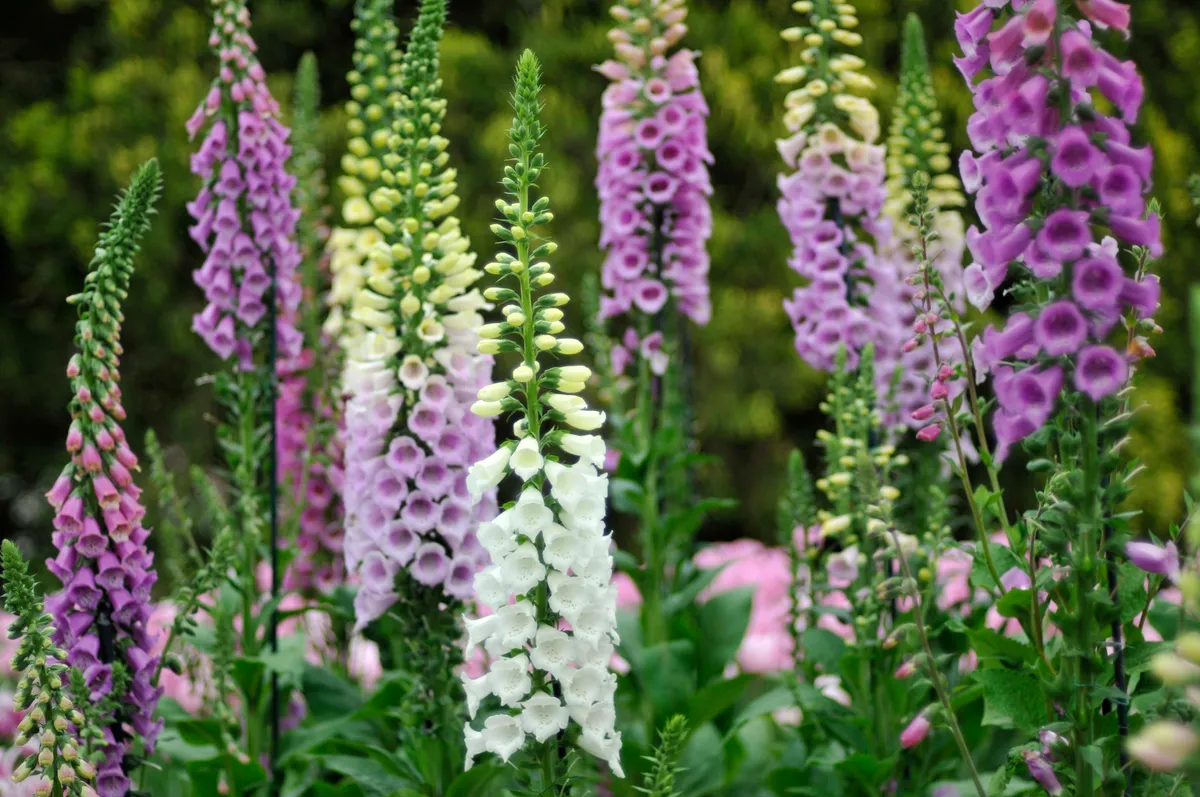
Exotic peony, Paeonia peregrina
Large magenta flowers in May and June attract crowds of honey bees and bumblebees. The plants grow to about 80cm tall and wide, ideal for the middle of a sunny border.
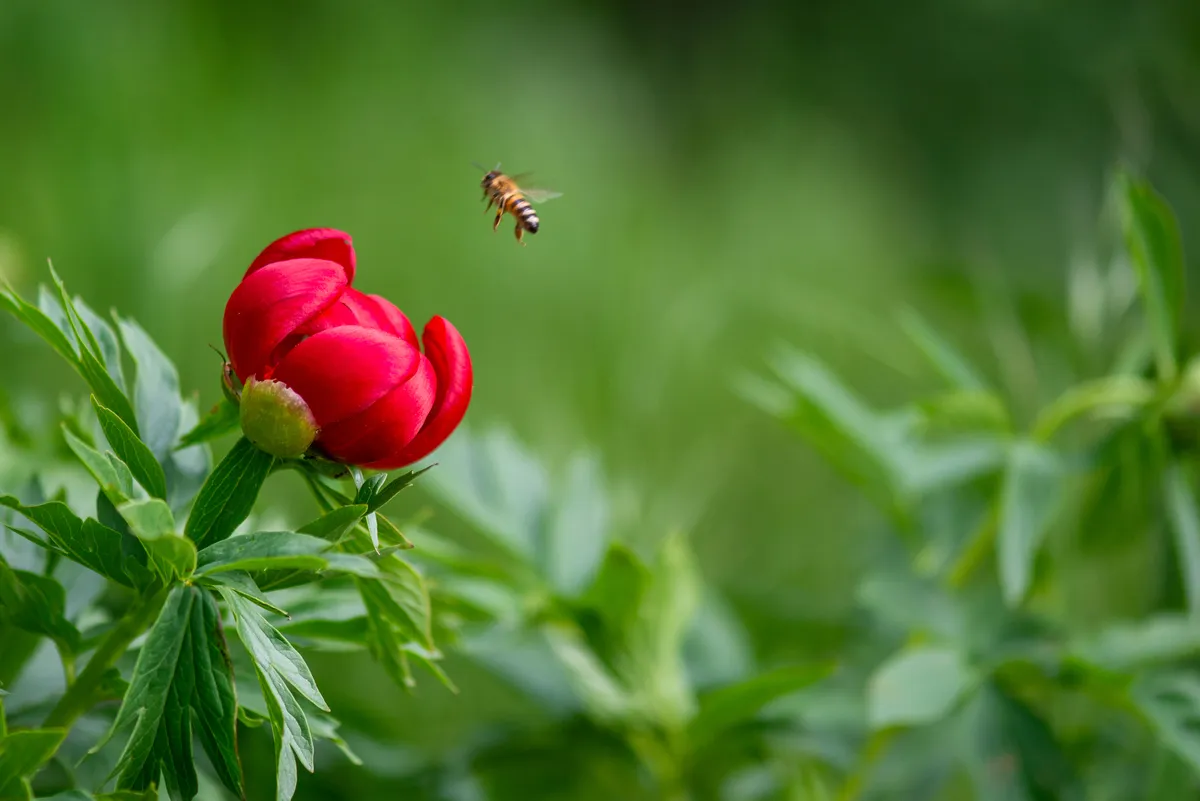
Catmint, Nepeta racemosa
A fantastic cottage-garden classic, one of the best all-round garden plants for bees of a wide range of species. Gently sprawling plants bear an abundance of soft-blue flowers. It’s very easy to grow almost anywhere, with a long flowering period from late May to the end of summer.
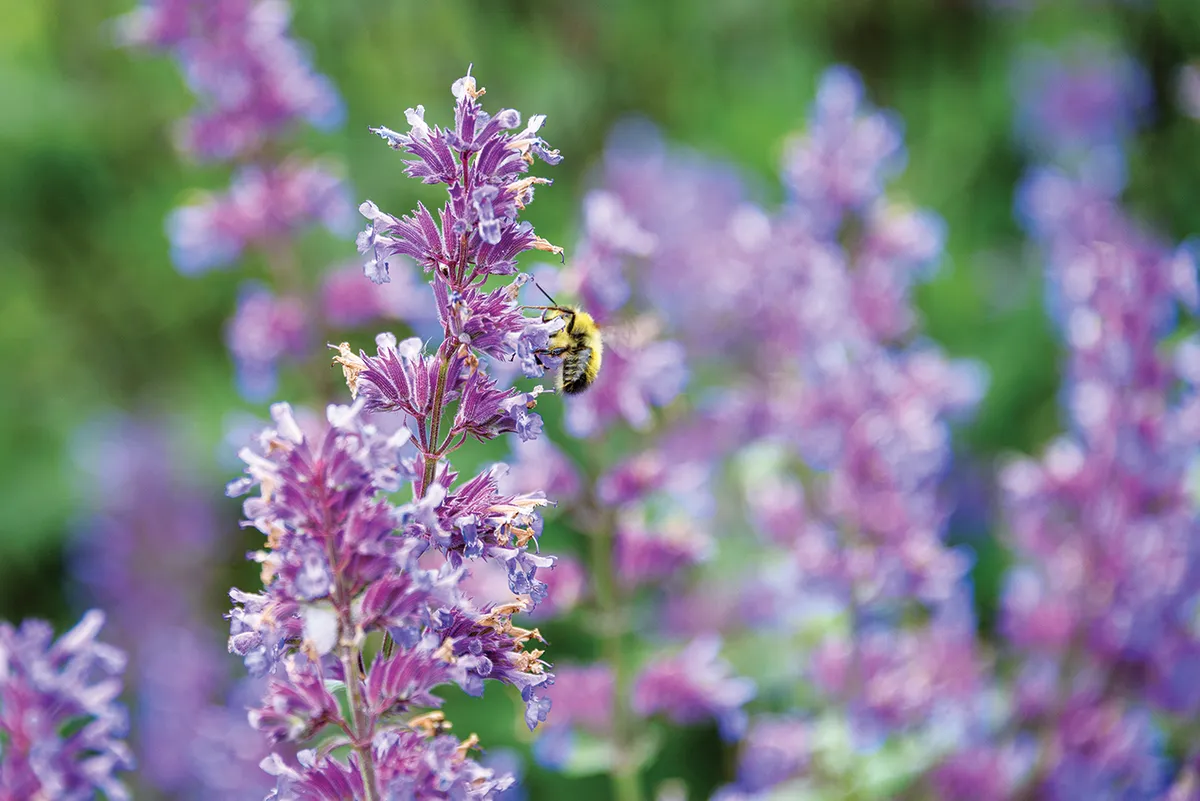
Plume thistle, Cirsium rivulare ‘Atropurpureum’
A great plant for bumblebees in high summer, this species is not spiny like its wild thistle relatives, and is quite at home in a flower bed. The rosettes of dense green leaves send up purple, nodding flower heads on stems up to 1m tall from June to August.

Lesser calamint, Calamintha nepeta
An understated, aromatic perennial herb growing to about 60cm, and bearing loose clusters of small white or pale pink flowers from early summer to autumn. It may not look impressive, but it is much loved by all types of bee. Easy to grow, preferring a well-drained position if possible, it is suited to growing in pots.
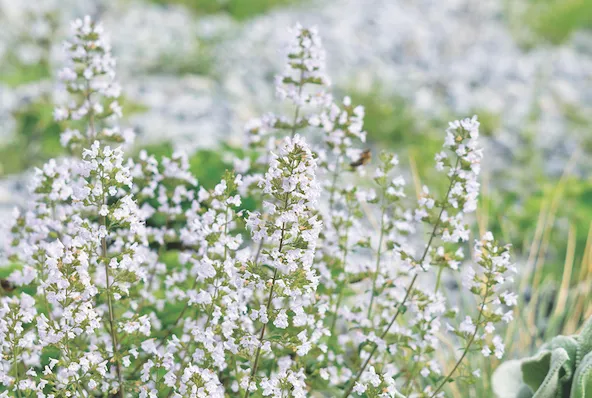
Blue tansy, Phacelia tanacetifolia
An annual plant sometimes sold as a green manure, Phacelia is spectacularly attractive to all sorts of short-tongued bees and hoverflies. Seeds can be sown direct in a border, and should flower eight weeks later. The clusters of purple flowers produce abundant nectar and plentiful purple pollen on very long anthers that give the flowers a spiky appearance. Sow seeds in autumn for early spring flowering, or any time in spring to early summer.
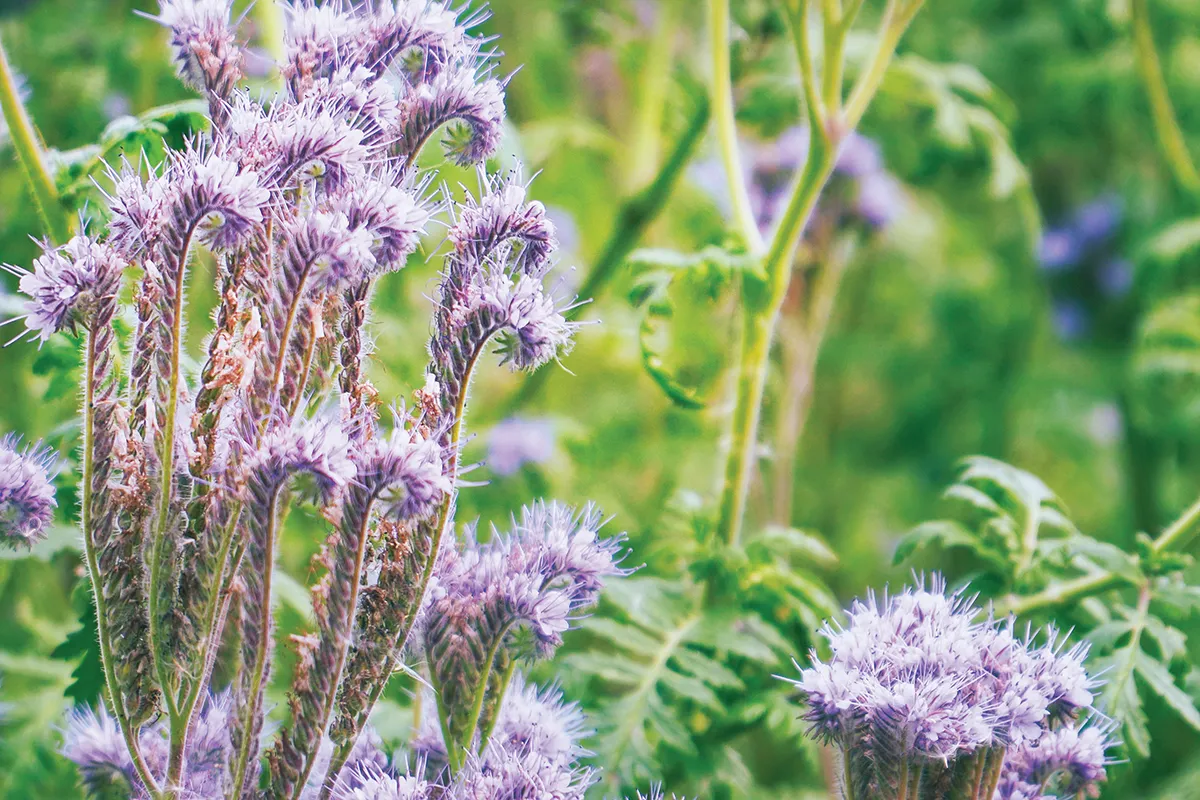
Viper’s bugloss, Echium vulgare
This stunning biennial wildflower grows to about a metre tall. Flowering in July and August, it is absolutely loved by bees of all types for its copious nectar. Viper’s bugloss likes a sunny, well-drained site and is very easily grown from seed.

Lavender, Lavandula
This stately mauve-flowered perennial is one of the best plants to grow if you want to guarantee a nectar supply in July and August for a range of bees, moths and butterflies. Dutch lavender, Lavandula x intermedia, is the best species, with variety ‘Gros Bleu’ best of all for pollinators.
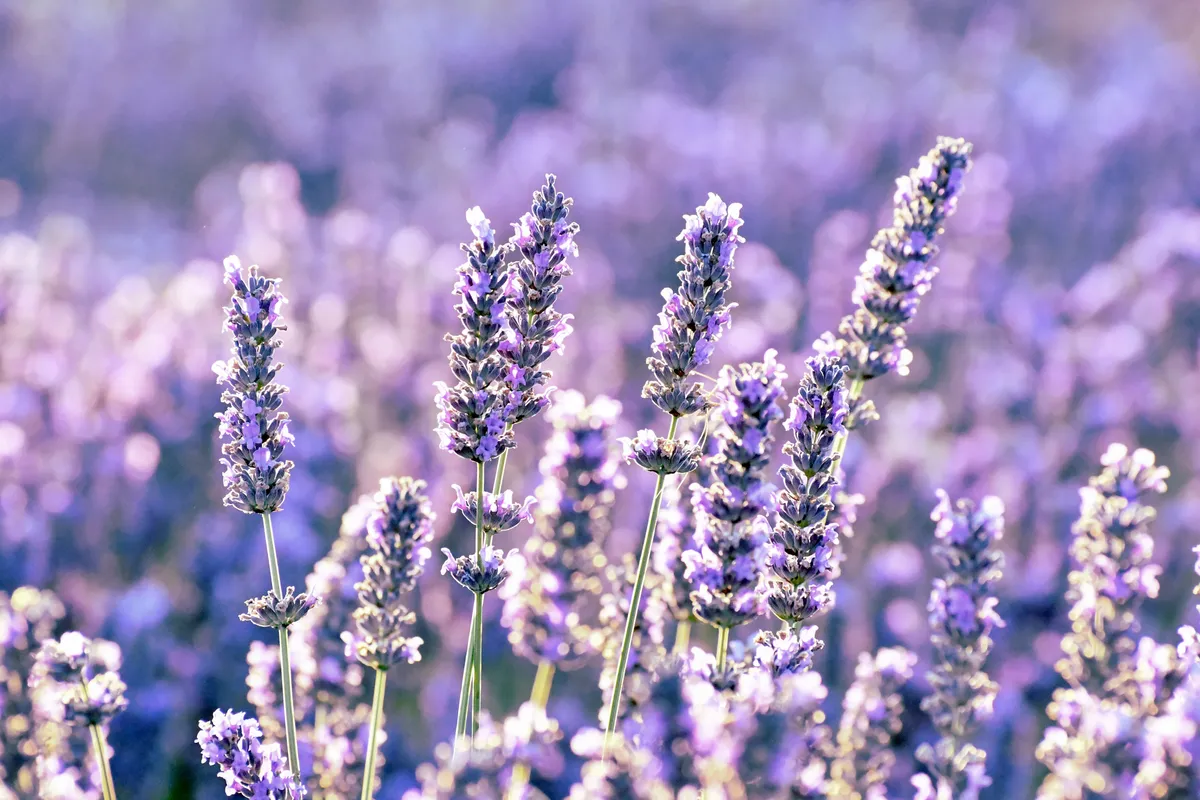
Marjoram, Origanum vulgare
Marjoram is a great all-rounder, very easy to grow, attractive to heaps of different pollinators and good for cooking, too. Marjoram is a tough perennial native, growing to about 80cm tall, and it loves a sunny position, also growing happily in a pot.
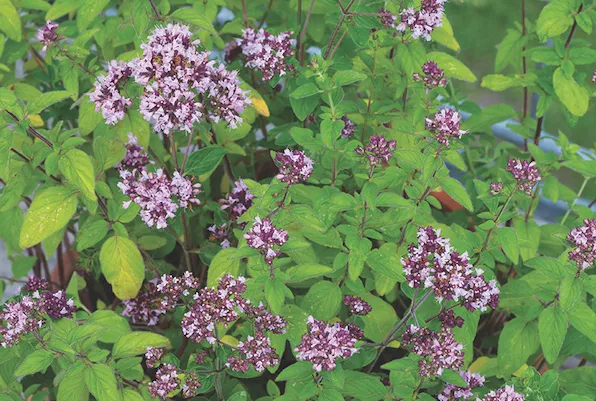
Thyme, Thymus polytrichus
As well as bumblebees, thyme attracts hoverflies and honey bees in abundance to its clusters of small purple flowers. This is a lovely, rambling perennial plant for a pot, the cracks in a patio, a rockery, or in the front of a border. Thyme prefers a sunny, well-drained position, and is tolerant of drought.

Field scabious, Knautia arvensis
A lovely native meadow perennial, one of my favourites, perfect for a sunny cottage garden border or meadow area. I love the powder-puff blue of the flowers in July and August, and bees, butterflies and hoverflies seem keen too. Birds, such as goldfinches, enjoy the seeds in winter. Flowers in July and August.
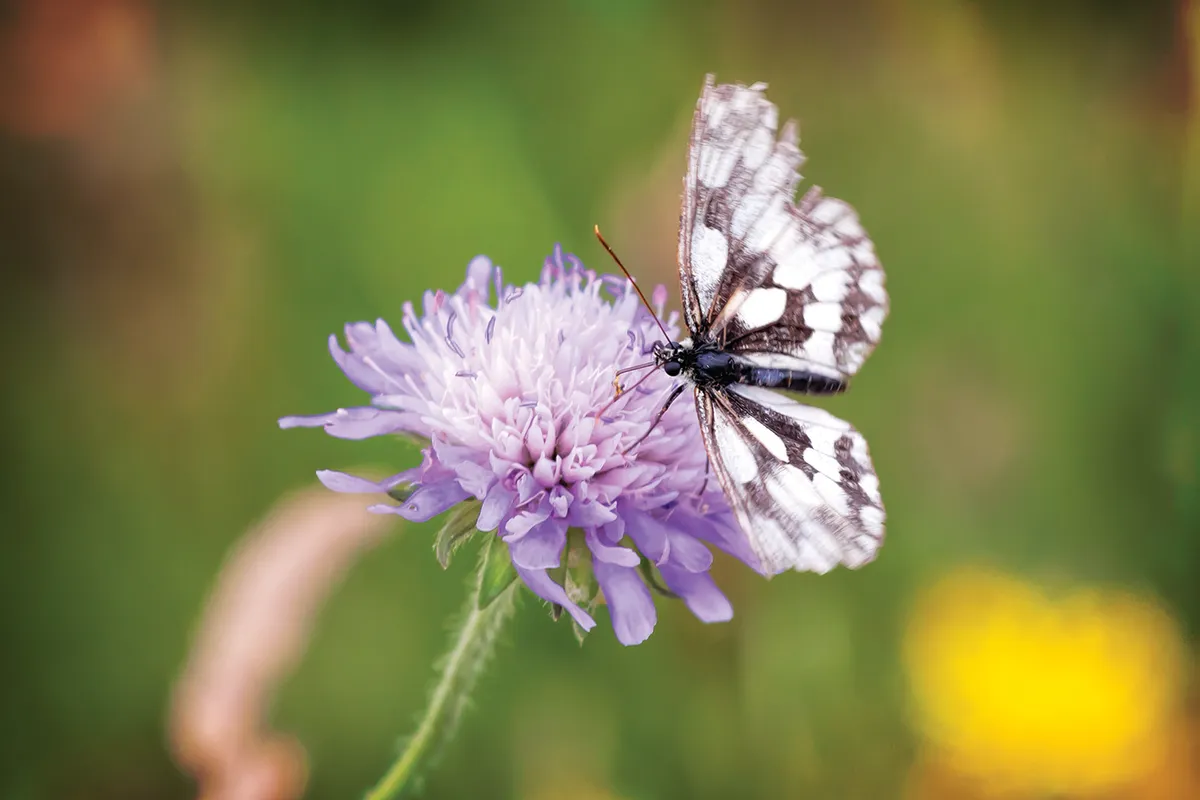
Giant hyssop, Agastache
One of the very best plants for bees, giant hyssop is a clump-forming perennial that likes a sunny, well-drained border. Forms very attractive clumps of blue flower spikes up to 1m tall in late summer. The variety ‘Blackadder’ seems particularly good.
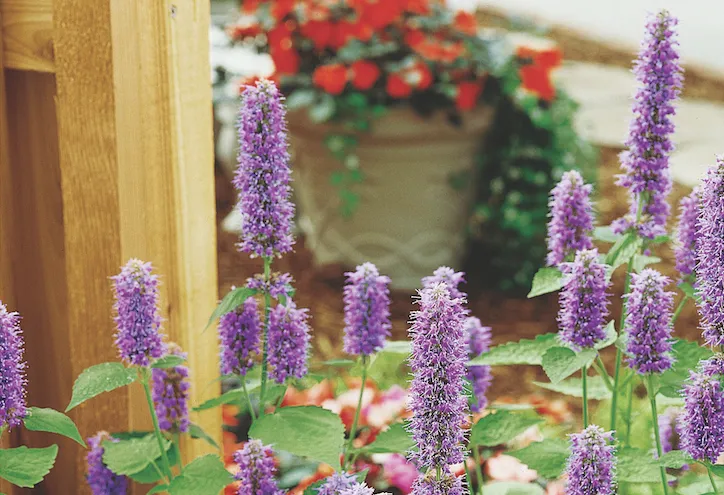
Dahlia, ‘Bishop of Llandaff’
Dahlias feature in few lists of recommended plants for pollinators, but single varieties such as this one can be fantastic magnets for bumblebees (avoid the ‘cactus’ or ‘pompom’ varieties, which are showy but useless). ‘Bishop of Llandaff’ has brilliant red flowers and purplish foliage, grows up to 1m tall and flowers from August through to the first frosts. The tubers are sensitive to frost, so they are best dug up and stored for the winter.

Sneezeweed, Helenium
Producing glowing, red, orange or yellow daisy-like flowers on tall stems up to a metre, helenium is a magnet for honey bees, solitary bees and hoverflies from August through to October. There are a number of species and hybrid garden varieties: ‘Moerheim Beauty’ is an excellent variety I have tried. Helenium prefers a well-drained soil in full sun.
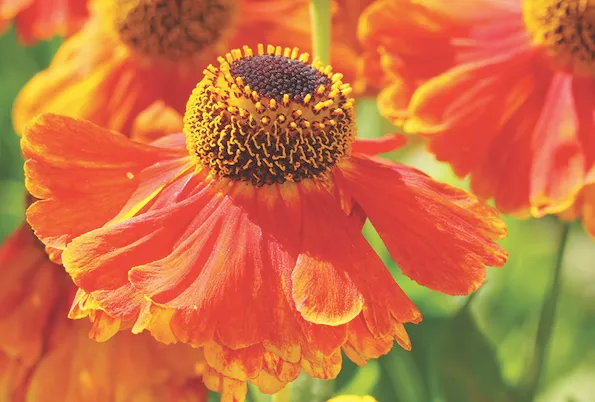
Goldenrod, Solidago
These clump-forming perennials usually grow to about a metre tall, producing very attractive arching sprays of tiny yellow flowers in late summer and autumn. Goldenrods are attractive to many different bees, including bumblebees, honey bees, sweat bees and nomad bees. They can thrive in very poor soil, but prefer an open situation.
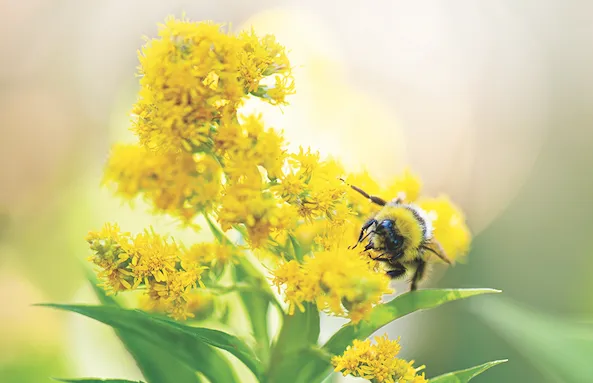
Rose climbers, Rosa
Roses are among the most familiar of ornamental plants, having been cultivated for millennia. There are over 300 species and countless cultivars. Only the single-petal varieties tend to be attractive to pollinators.
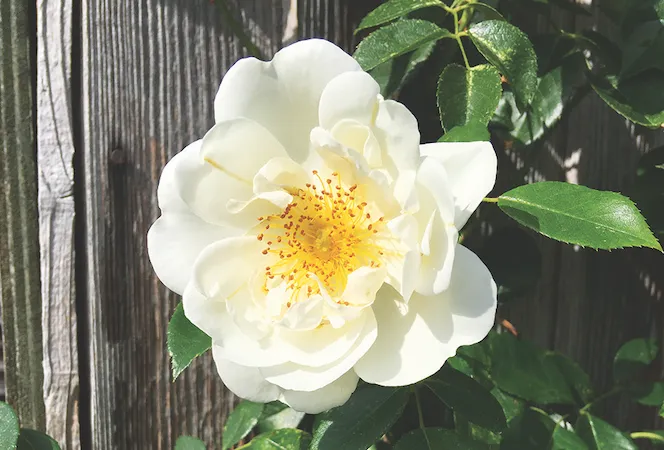
Ivy, Hedera helix
Ivy is not popular with many gardeners, but it should be. The small, greenish-yellow clusters of flowers that appear in September are inconspicuous, but they attract all manner of insects, including butterflies such as the red admiral stocking up on sugar for hibernation, and honey bees, bumblebees, solitary bees, wasps and beetles.
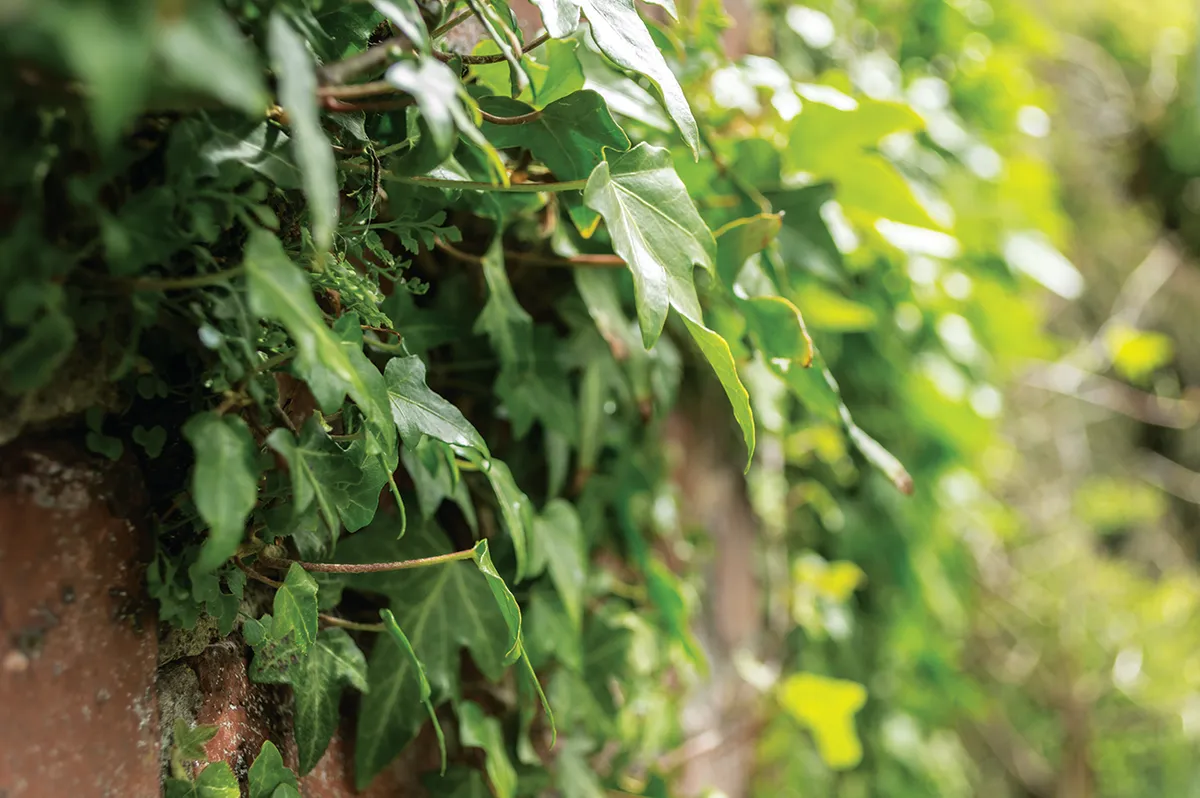
Hydrangea, Hydrangea serratifolia
A slow-growing evergreen climber, with the potential to reach 12m or more in height. It has glossy, very large leaves and clusters of creamy-white flowers in July and August which become alive with bees, mainly honey bees and short-tongued bumblebees.
If you’d just flown from another continent, you would need some nectar. In spring, butterflies arrive in the UK after a mind-boggling flight from Africa or southern Europe, and require food to revive them. Likewise hoverflies - 4 billion of them, arriving from Europe - must find sustenance after their journey. And our native bees are busy feeding and building nests in the shelter of our gardens. With wildflower forage in decline (for instance 97% of flower meadows have been lost), gardens are vital sources of nectar.

Best spring plants for bees and butterflies
Here is our guide to ten of the best spring plants to provide pollinators with an essential food source – and add colour and variety to your garden.
Words: Hazel Sillver
Small tree: Prunus ‘The Bride’
In spring, this compact flowering cherry is a mass of snow white flowers that lure bees and butterflies. Throughout April, the tree’s bare branches are coated in the single white flowers that have a central raspberry red flush; then in autumn, the leaves take on fiery tints. Grow in well-drained soil in sun. H2-4m.
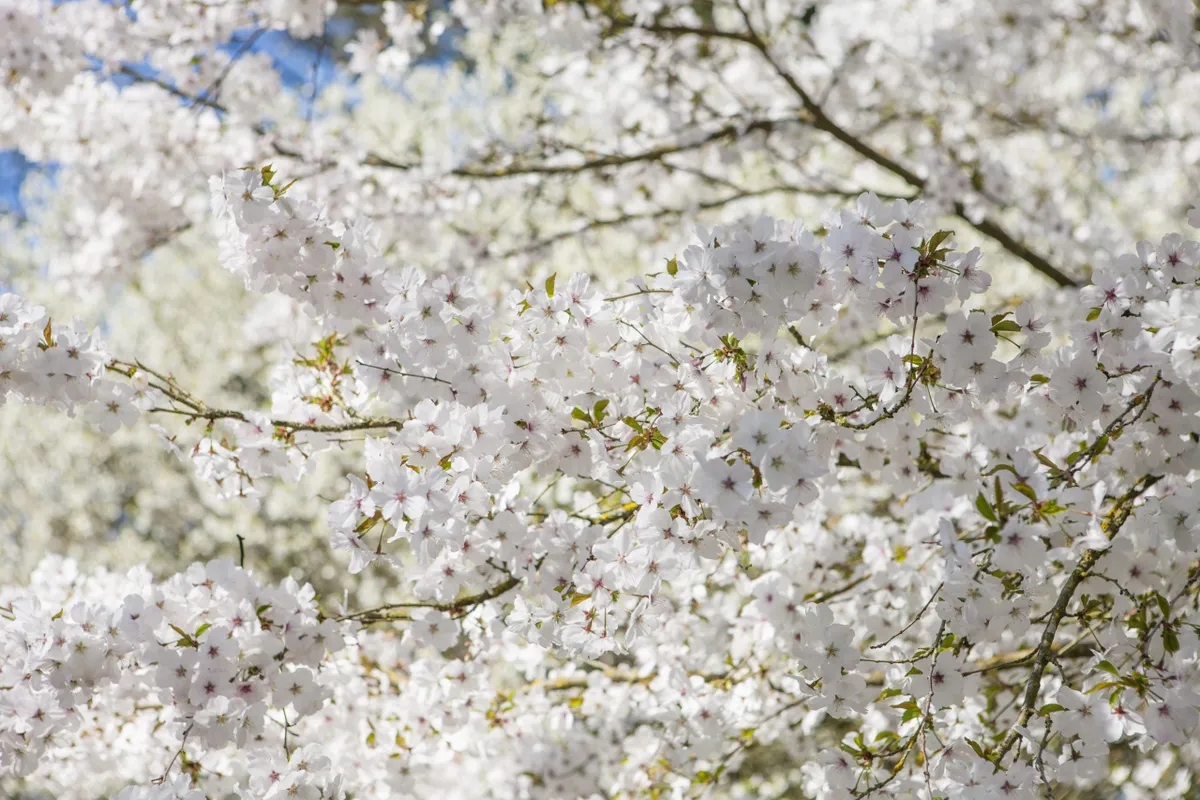
Ground cover perennial: Trachystemon orientalis
An excellent ground cover plant for shade (even dry shade), the early-flowering borage is also a rich food source. In March and April, the small blue flowers with purple-pink spikes are a-buzz with contented bees. H30-60cm.
Shade-loving perennial: Pulmonaria ‘Blue Ensign’
Bees visit the glowing blue flowers that adorn this lungwort from March to May. Plant in semi-shade or shade, ideally in the dappled light near deciduous trees and shrubs, in humus-rich, moist, well-drained soil. H30-40cm.
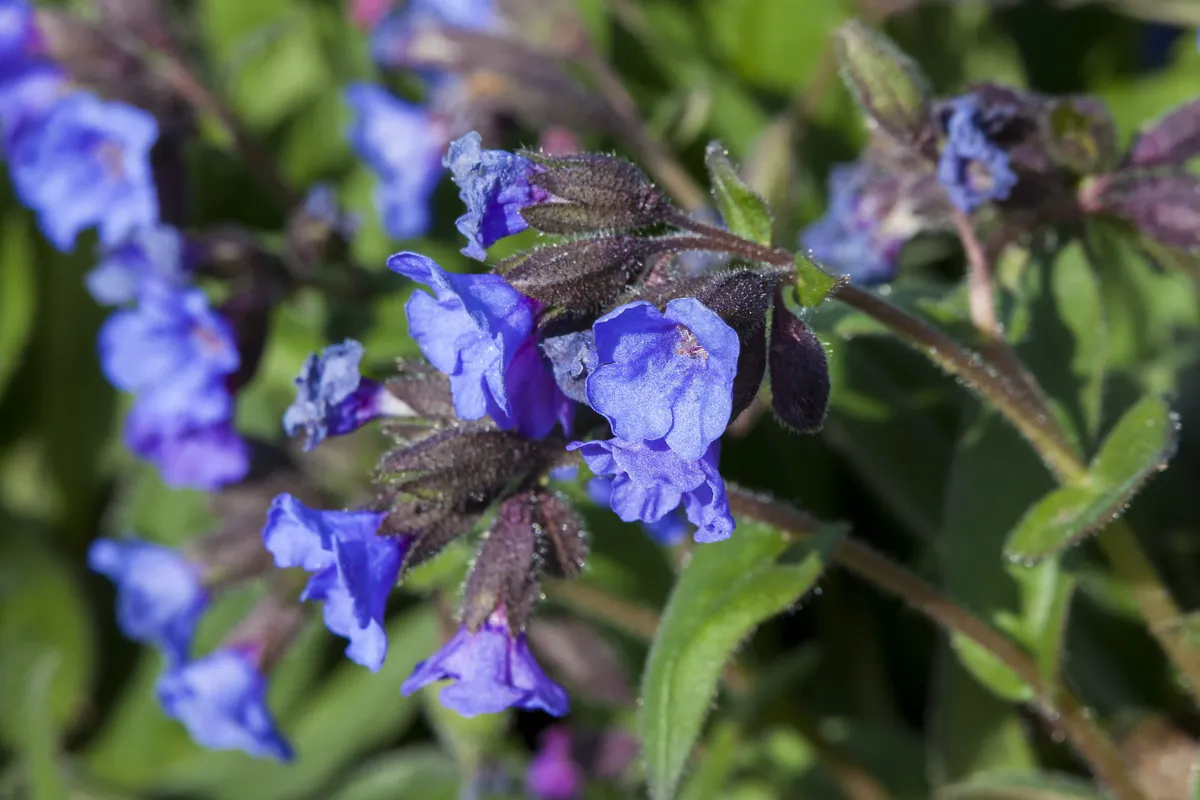
Flowering shrub: Ribes sanguineum ‘King Edward VII’
The loud whir of bumblebees surrounds this ornamental currant when it flowers in April. The racemes of shocking pink flowers dangle amongst the aromatic leaves. It can be grown as an informal hedge in well-drained soil in sun. H1.5-2m.
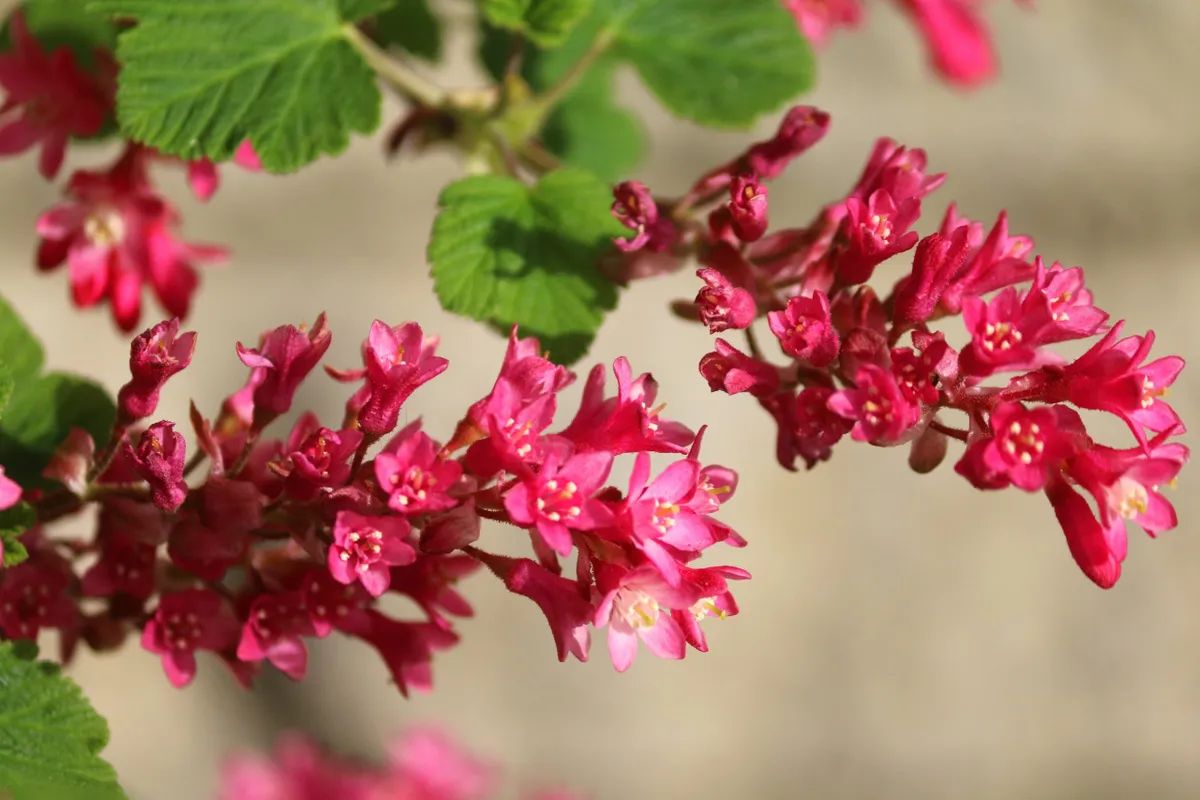
Dwarf evergreen shrub: Heather, Erica x darleyensis ‘Furzey’
Bees love the nectar-rich flowers of this heather, which form a mat of lilac pink during winter and spring. Grow in well-drained, neutral to acid soil in sun. H30-45cm.
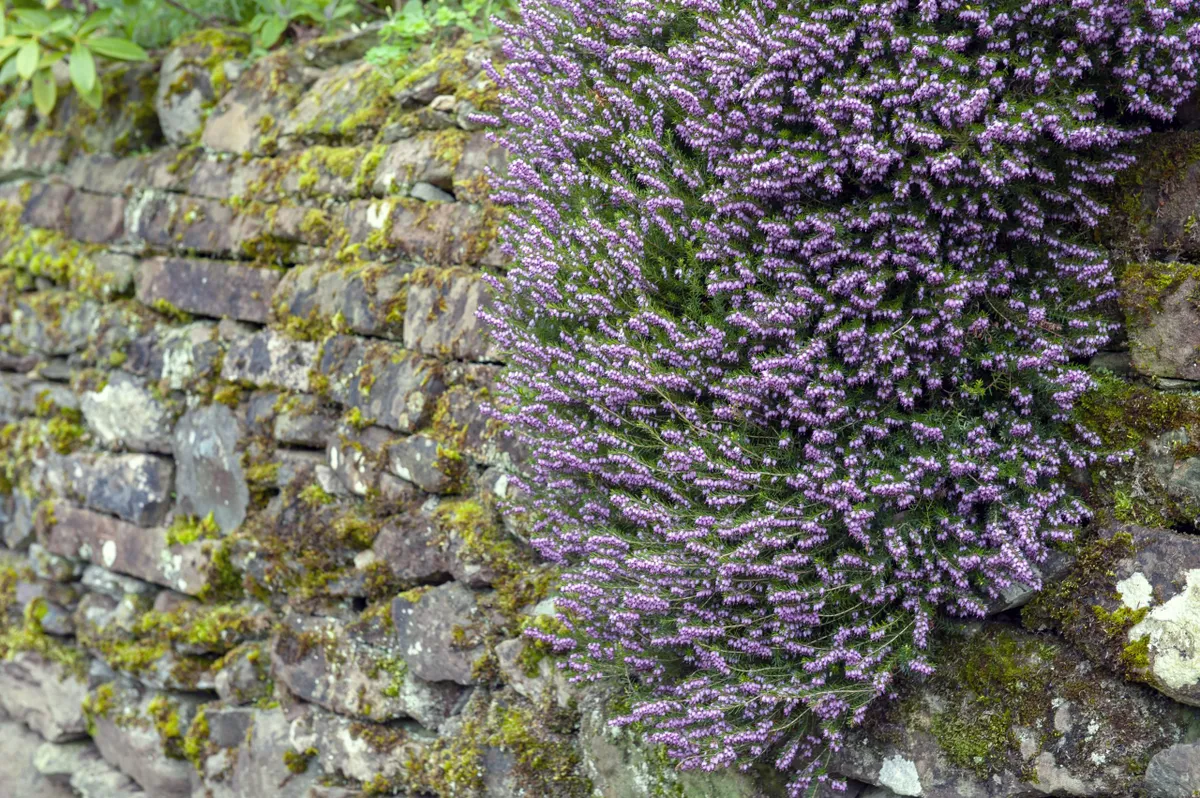

Evergreen perennial: Ajuga tenorii, Princess Nadia
This new bugle has young pink evergreen leaves that mature to green and cream, and purple blue flowers that attract butterflies in spring. It appreciates moisture-retentive, well-drained soil, so dig in organic matter (such as compost) on planting in semi-shade. H10-20cm.
Biennial: Honesty, Lunaria annua
Honesty is a biennial, which means it flowers in its second year. As well as the mauve purple flowers feeding butterflies in May, the plant provides a place for the Orange Tip to lays its eggs. The lunar disc-shaped seed pods are enchanting in autumn and winter. Grow in moisture-retentive, well-drained soil in semi-shade. H75-90cm.
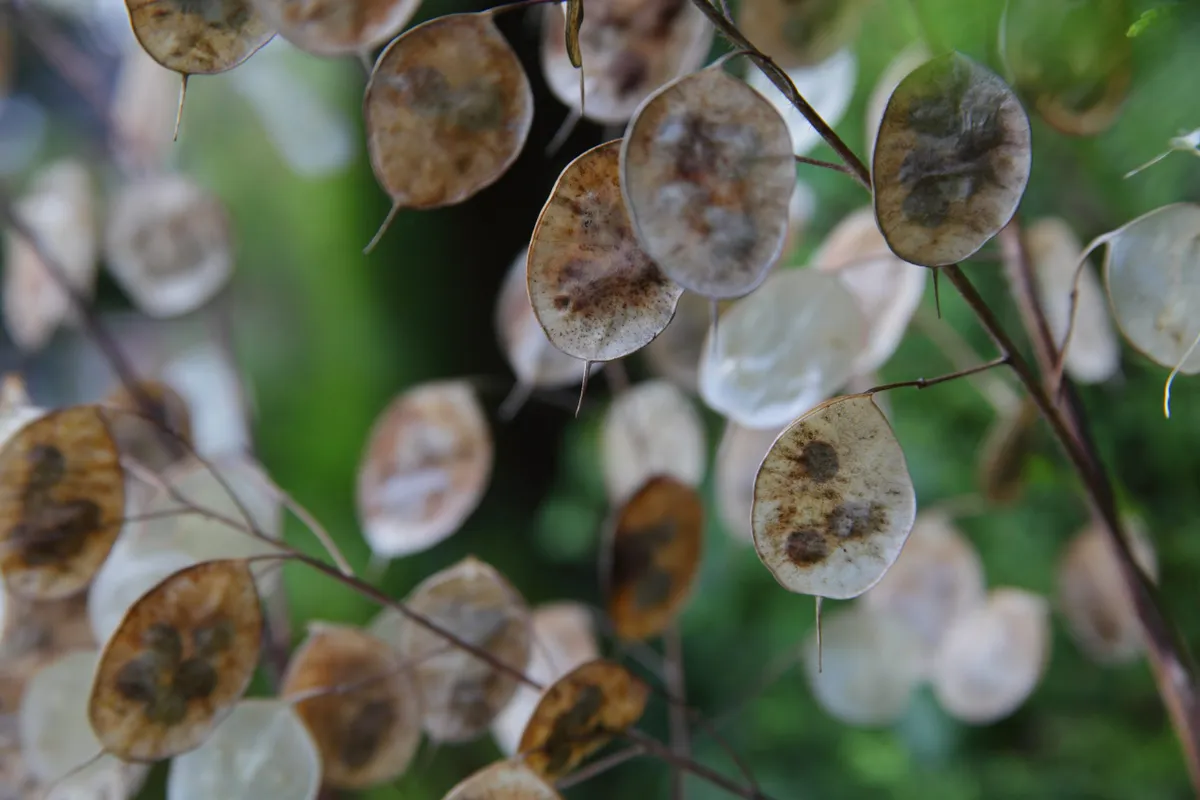
Herbaceous perennial: Primrose, Primula vulgaris
The good old primrose delights us in spring when it blooms en masse, on the banks of hedgerows. At home, create the same effect, planting generously around deciduous trees and shrubs. H10-15cm.
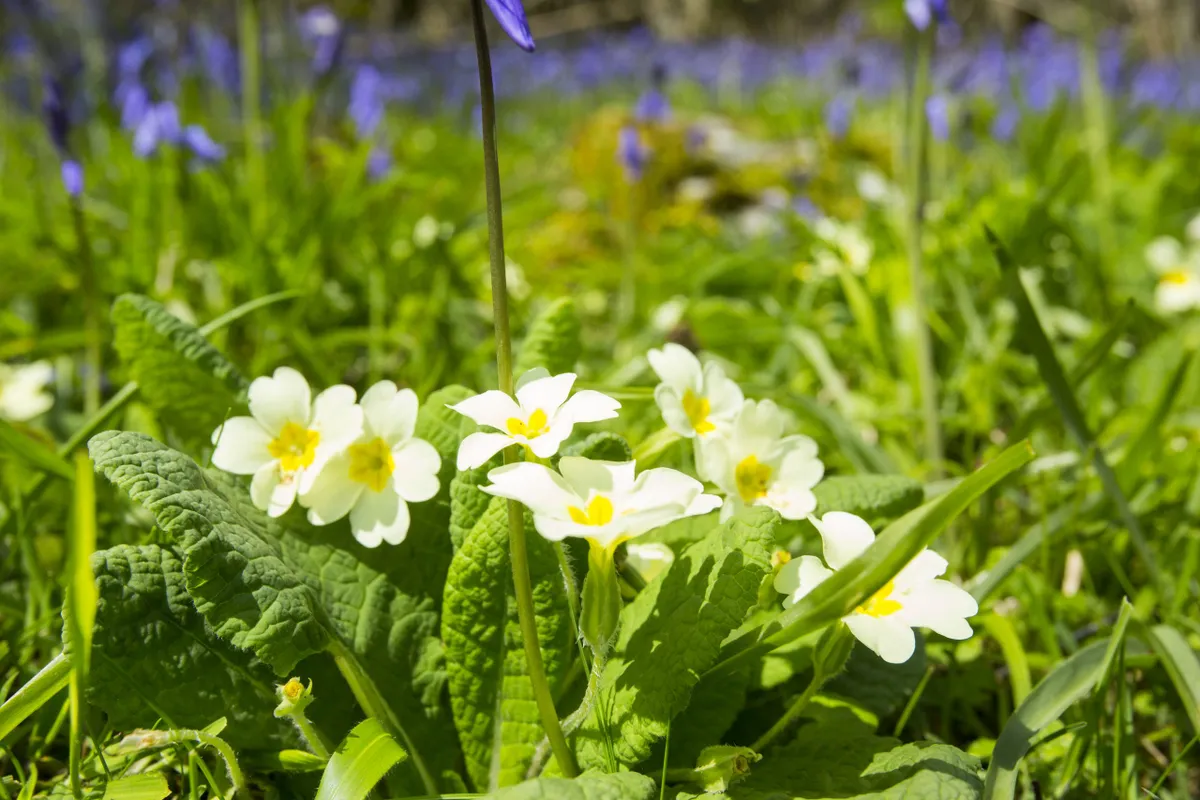
Bulb: Grape hyacinths, Muscari ‘Jenny Robinson’ (syn. ’Baby’s Breath’)
Butterflies like the sweetly scented, ice blue flowers of this grape hyacinth, which bloom in April and May. Grow in pots or sunny, well-drained borders. H15-20cm.
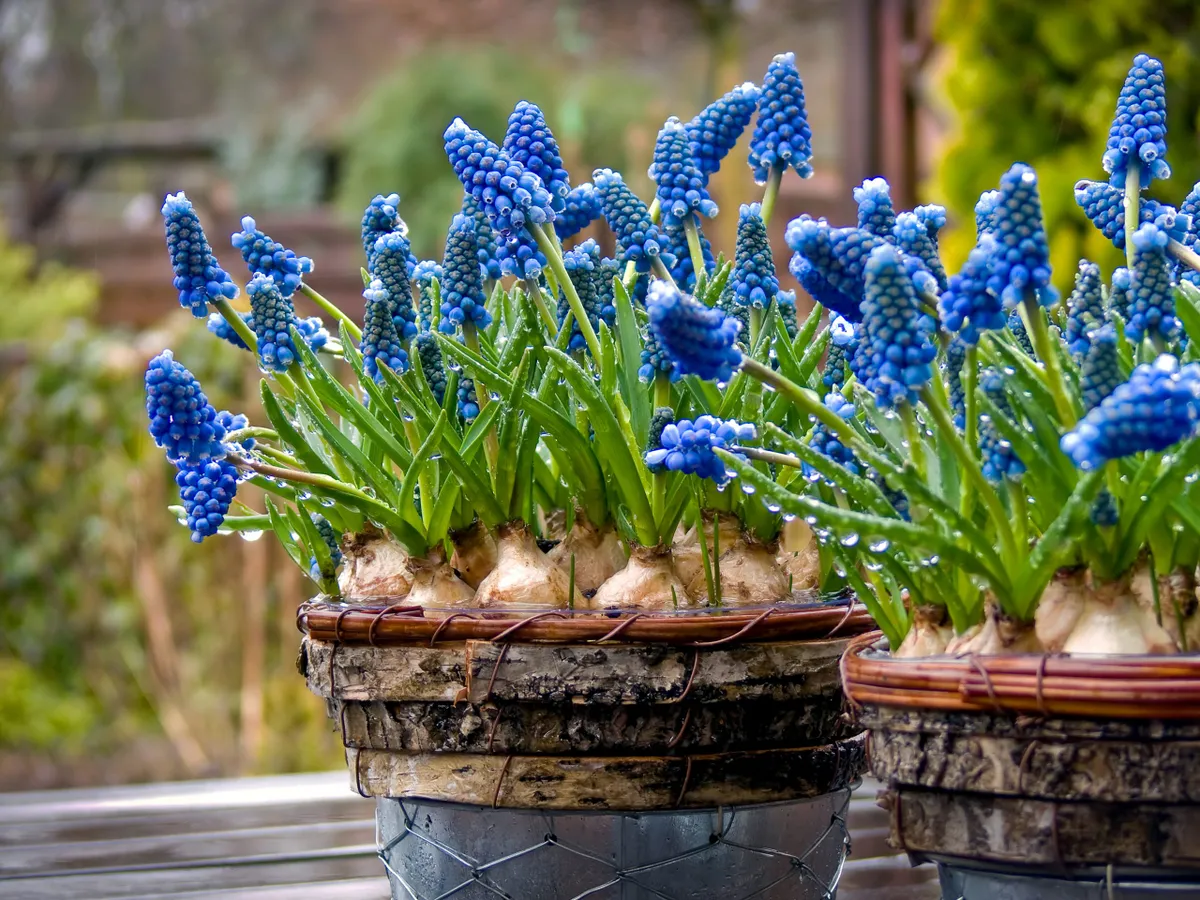
Evergreen shrub: Rosemary, Rosmarinus officinalis ‘Green Ginger’
This variety of rosemary has ginger-scented, evergreen leaves and nectar-rich blue flowers that bloom in late spring and early summer. It can be grown as a low hedge to line a path in well-drained, sun-baked soil. H50cm-1m.
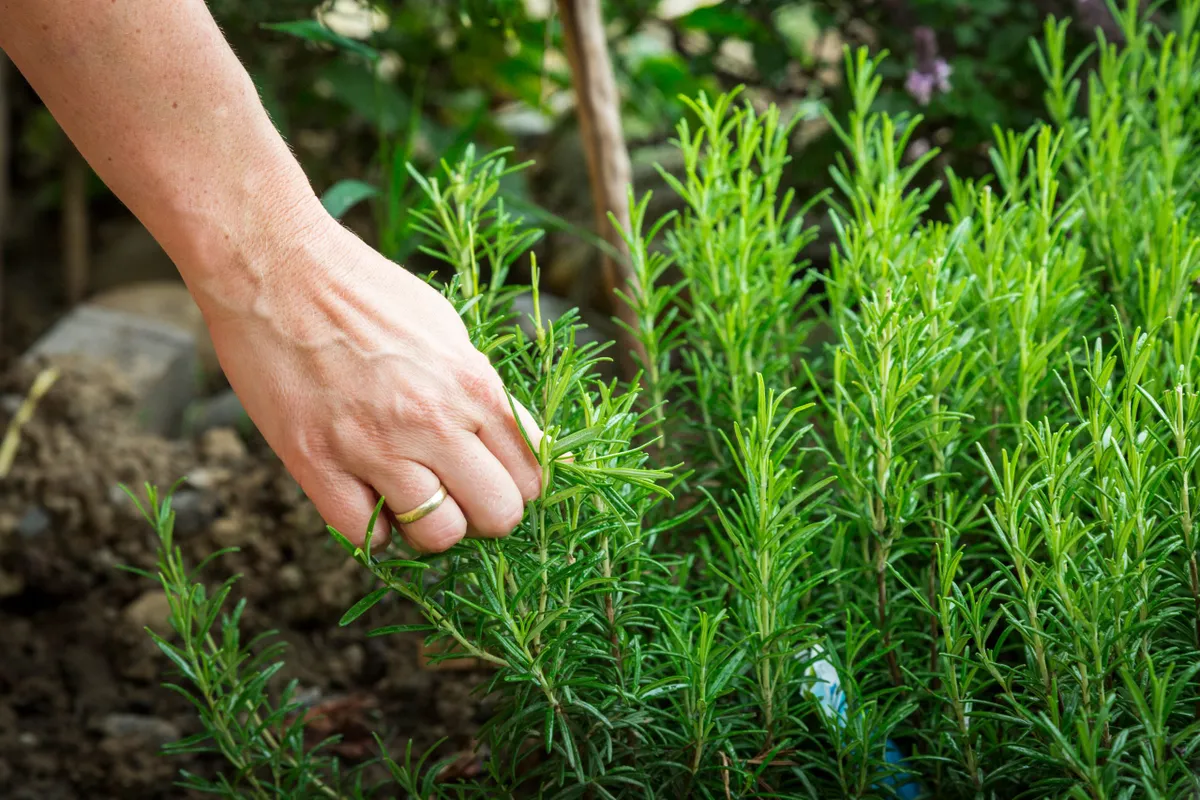
Where to buy seeds
Plants that aren’t organic can contain chemicals that harm wildlife. But there are an increasing amount of suppliers that grow organically, including Penlan Perennials , peat free plants and Bee Happy Plants.
Mow your lawn less
The very simplest thing we can do for wildlife in our gardens is mow less often, saving you time and petrol. Most lawns contain flowers: clovers, trefoils, selfheal, daisies, speedwell, buttercups and more. They just never get to flower if we are obsessively cutting neat stripes every week or two. The next time you get the urge to mow, make yourself a refreshing drink instead, sit down in a garden chair and enjoy the gentle drone of bees buzzing among the flowers. You might cut part of your lawn just once a year in late summer, creating your very own wildflower meadow.
A new campaign was launched in 2021 by the conservation charity Plantlife called 'No Mow May' to encourage people to leave their garden lawns to grow wild for pollinators in the month of May.
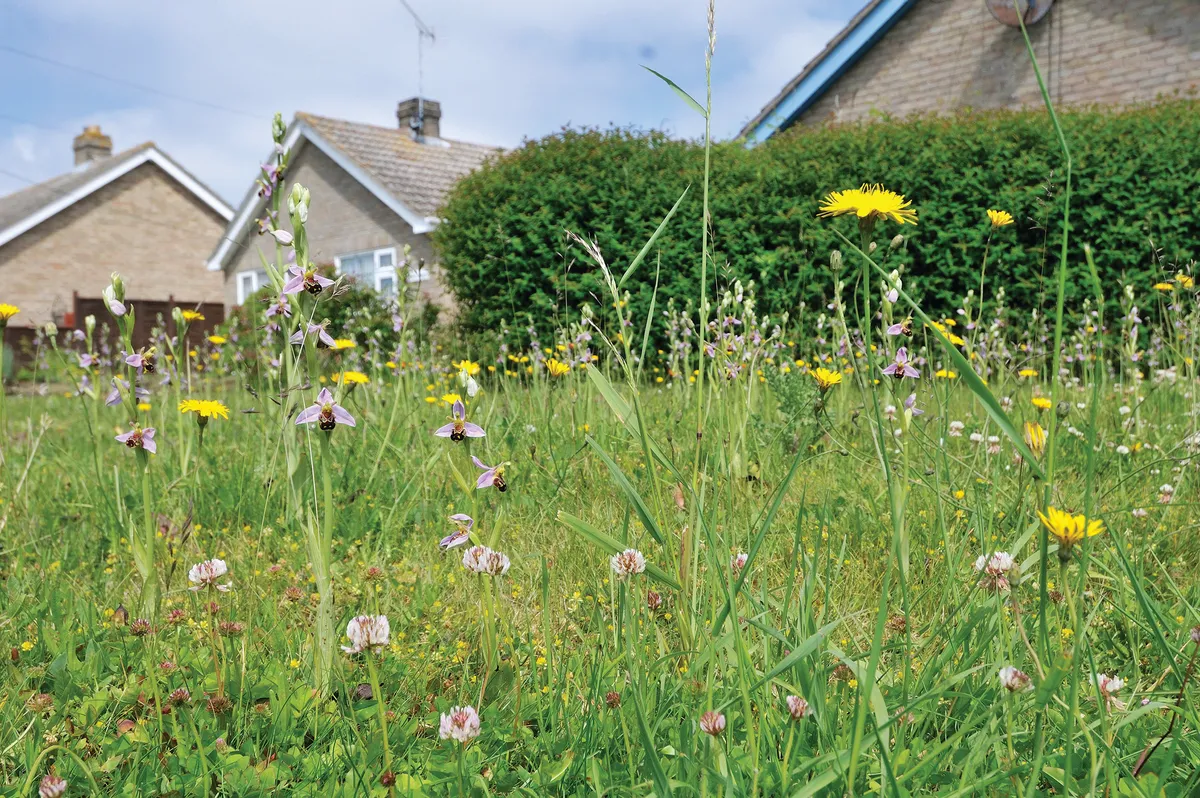
Other ways to attract wildlife
Aside from growing the right herbaceous flowers, there are many other ways you can entice more wildlife to come and live with you. Bee hotels provide nest sites for some solitary bees, while a ‘hoverfly lagoon’ might attract some types of hoverfly that have aquatic larvae. Ponds are of course wonderful habitats for insects, such as dragonflies, damselflies, caddis flies and whirligig beetles. A compost heap will team with insect life.
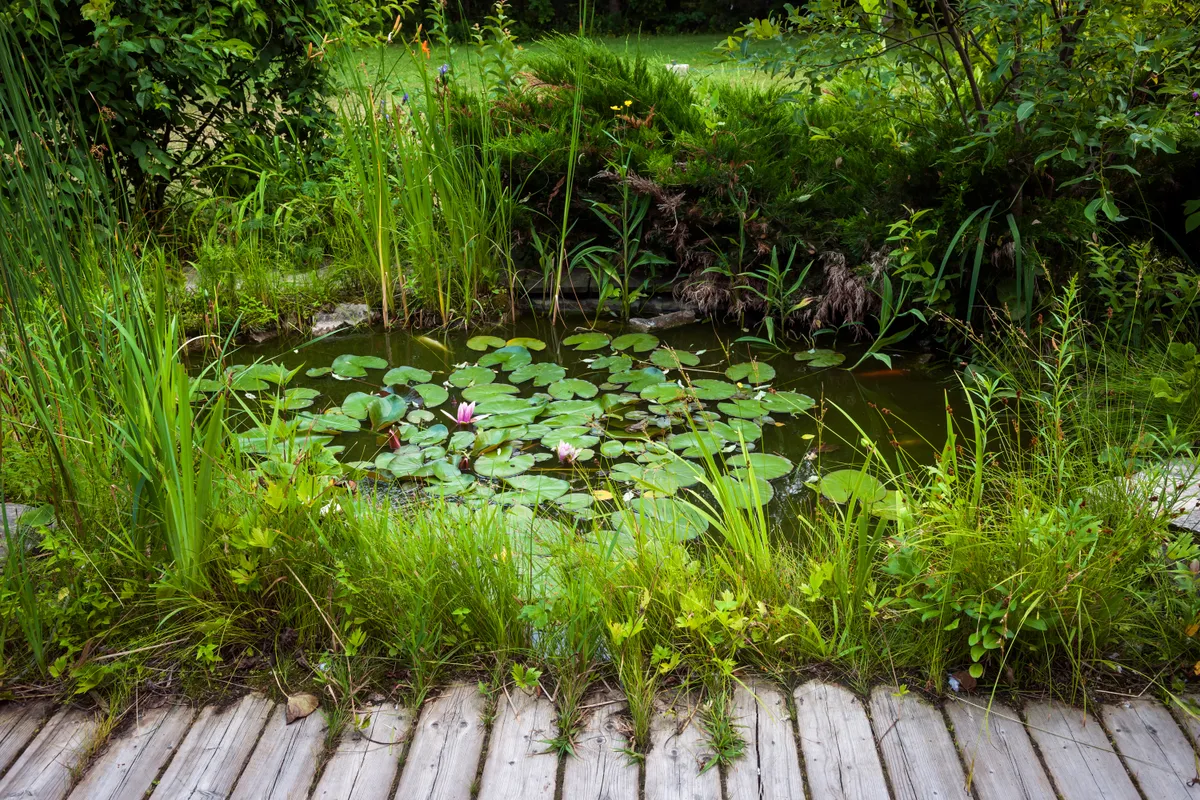
If you have room for a flowering fruit tree (even a small one on a dwarfing rootstock), you will provide blossom for pollinators, and a host of nooks and crannies for insects to live, as well as getting your own zero-food-miles fresh fruit. Of course, don’t use insecticides; there’s no need, if you have a healthy garden with natural pest control, such as ladybirds and lacewings.


